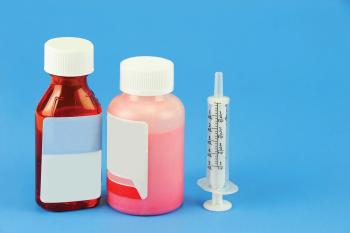
- Pharmaceutical Technology-03-02-2017
- Volume 41
- Issue 3
Overcoming the Challenges of Capsule Filling in Preclinical and Clinical Studies
The authors discuss the challenges of capsule filling in preclinical and clinical studies.
Capsule filling is common in preclinical and clinical studies. Companies are increasingly developing cytotoxic and potent compounds; containment of these substances is, therefore, a primary safety concern for laboratory managers. As the API dosed into capsules are typically not fully characterized at this stage, they must be treated as high-potency to protect the researchers handling them, because any spillage or exposure presents a potential safety risk.
Often, only a limited quantity of the drug substance is available. When working with a new chemical entity, where the synthesis program may run concurrently with the early dosing studies, early batches may be of the order of several grams, with perhaps a gram or less available for development work. At this phase, the drug is expensive and precious, so it is important to avoid wasting any.
Depending on the nature of the drug and test subject, new pharmaceuticals are often administered in gelatine capsules. The fill weight of each capsule must be accurately calculated and prepared according to the test subject’s weight. This preparation involves manually weighing highly potent, hazardous substances precisely with a spatula. Manual capsule filling, however, is tricky and challenging, especially with small capsules.
Manual filling is usually performed manually when the sample series are too small for filling machines or different amounts are required per capsule, which is not easy to automate. Manual filling can be slow and tedious, especially if tens, hundreds, or even thousands of capsules have to be prepared each day.
Alternatives to manual capsule filling
There are various solutions to overcome the manual filling challenges:
- Low-cost capsule boards are an extremely fast method of filling capsules, but have some drawbacks. Capsules cannot be filled with pure API because it would deliver too much API per capsule; hence, an excipient must be used. As segregation of powders cannot be controlled, homogeneous-proof samples are required and different formulations per capsule are not possible. Filling is achieved by volume, which is not highly reproducible, and capsule weights cannot be checked afterwards.
- Automated filling machines are a higher-throughput approach, but typically come at a high investment. Usually requiring at least a kilogram scale of material to run a batch, they are not flexible enough to fill different amounts per capsule. Additionally, these systems require time-consuming commitments of maintenance and cleaning between batches to prevent cross-contamination and ensure safety.
- Semi-automated capsule filling solutions bridge the gap between the manual and high-throughput machines. These flexible systems are usually compact and affordable, ideally suited for small batch capsule filling and accurately dosing different target amounts to each capsule gravimetrically (e.g., Quantos, Mettler Toledo GmbH).
Reduce time and enhance safety using automation
Reduce labor time. In a GMP lab, a validated filling system provides reduced labor time compared to manual filling. A technician may be capable of manually preparing 85-125 capsules per day at 3 mg target weights (technician dependent), whereas a semi-automated system produces 60 capsules per hour. Although the manual estimate depends on the standard operating procedure (SOP), a manual fill in a GMP lab would also require the eyes of two technicians: one to tare the balance, fill the capsule, and record the final fill weight; and the other present to verify each of these steps. Whereas, using a validated filling system requires only one operator to perform the task. Additionally, the tare and fill weights can be captured electronically and stored and/or printed automatically, which reduces the labor time associated with data recording/transcription.
Reduce development time. By using neat API in capsule, formulation development time can be reduced by simply evaluating the compatibility between the capsule shell and the API, instead of investigating excipient compatibility and fully formulating a dosage form. Analytical method development time can also be reduced because no specificity needs to be qualified, as no interfering excipients are present. Thus, the analytical method for the drug substance can suffice for the drug product.
Typically, release testing is performed on all incoming materials and final dosage forms before release to the clinical side. Using neat API in capsule, the initial release determines the purity and potency of the API, which minimizes the release testing and allows substances to get to the clinic faster.
Minimize cleaning and cross contamination. In setting up a typical fully automated encapsulation machine, there are a number of product contact parts that have to be cleaned and verified by swabbing after dosing to determine residual API left on the instrument. However, semi-automated filling systems are much simpler to clean, because no substance comes into contact with any other part of the system other than the dosing head and the sample changer, which is easily detached for cleaning. The rest of the system is considered non-product contact and thus needs no additional cleaning verification. Cross-contamination risk is eliminated, as separate dosing heads are used for each substance.
Enhance safety and reduce wastage. With high-potency substances, semi-automated capsule filling offers significant safety benefits. Potential exposure is reduced using a self-contained dosing unit. The drug substance is stored in a standard jar or vial with a dispensing head screwed on top, protecting the analyst from the drug, and the substance from the environment. At this phase, when working with new chemical entities that can cost thousands of dollars per gram, it is important to avoid any substance wastage. Weighing small quantities such as 1-5 mg, manually with a spatula, can result in significant loss or spillage. Having a system that accurately dispenses exactly the required amount, without wasting anything is, therefore, beneficial.
Article Details
Pharmaceutical Technology
Vol. 41, No. 3
March 2017
Pages: 32
Citation
When referring to this article, please cite it as M. Greene and J. Ratcliff, “Overcoming the Challenges of Capsule Filling in Preclinical and Clinical Studies" sidebar to “Key Considerations in Capsule Filling," Pharmaceutical Technology 41 (3) p. 32, 2017.
Articles in this issue
almost 9 years ago
Understanding Containmentalmost 9 years ago
International Trade Issues Threaten Global Pharma Operationsalmost 9 years ago
Oral Delivery of Biologic APIs: The Challenge Continuesalmost 9 years ago
Covering Global Regulations in a Quality Systemalmost 9 years ago
Risk-Based Predictive Stability–An Industry Perspectivealmost 9 years ago
Quality Agreements:Managing Global Relationshipsalmost 9 years ago
Achieving Manufacturing Excellencealmost 9 years ago
GMP Facility Modernization: Opportunities for Successful Implementationalmost 9 years ago
Loading Bench for Cold-Chain ManagementNewsletter
Get the essential updates shaping the future of pharma manufacturing and compliance—subscribe today to Pharmaceutical Technology and never miss a breakthrough.




